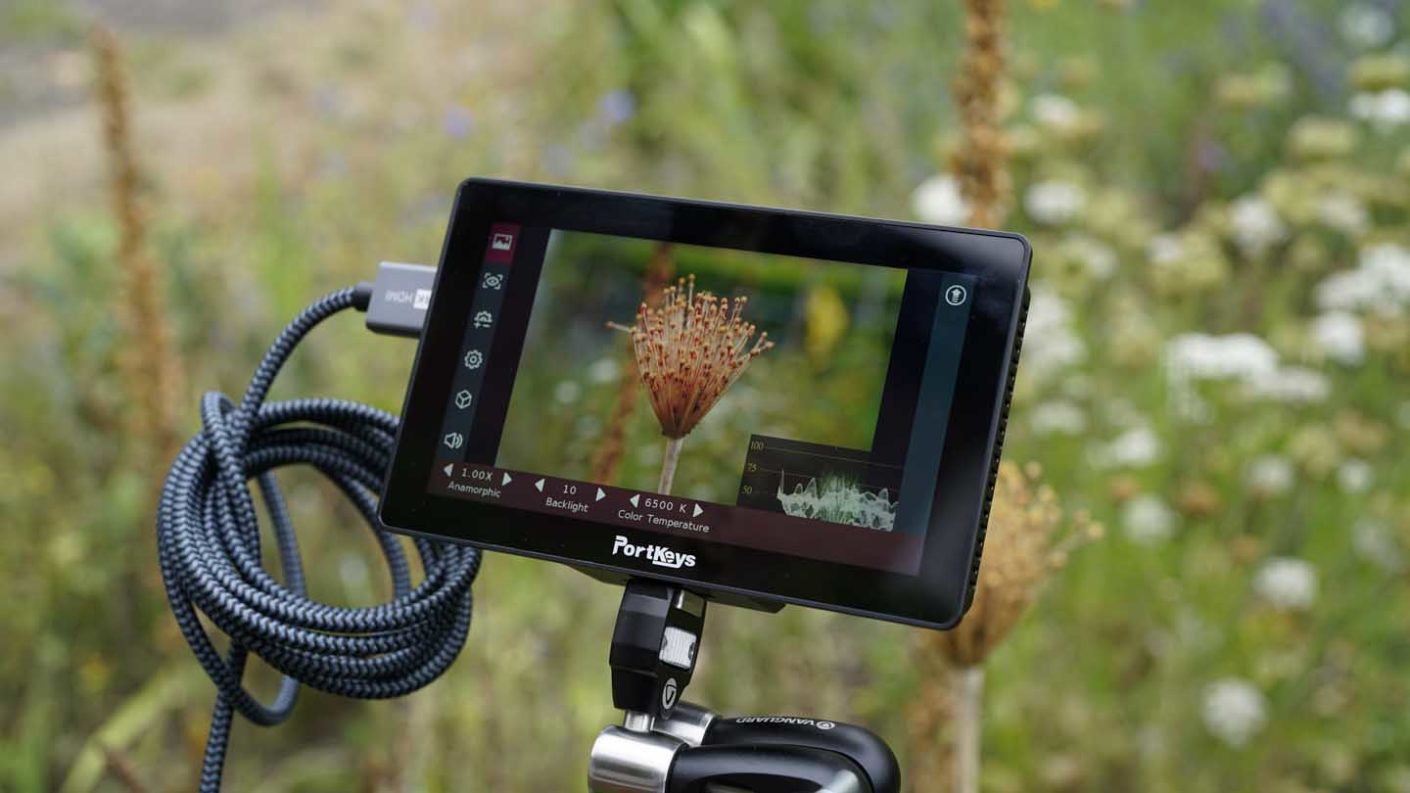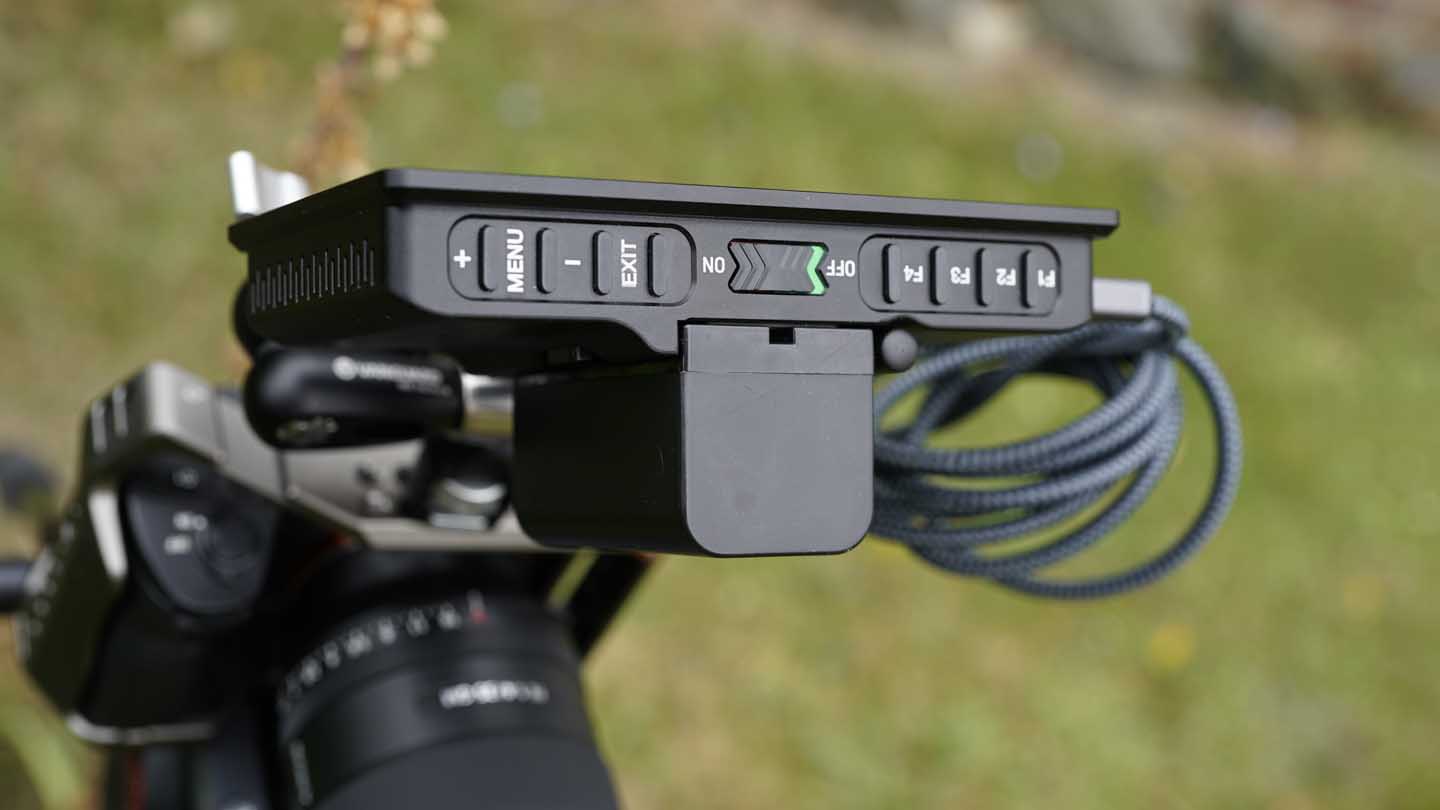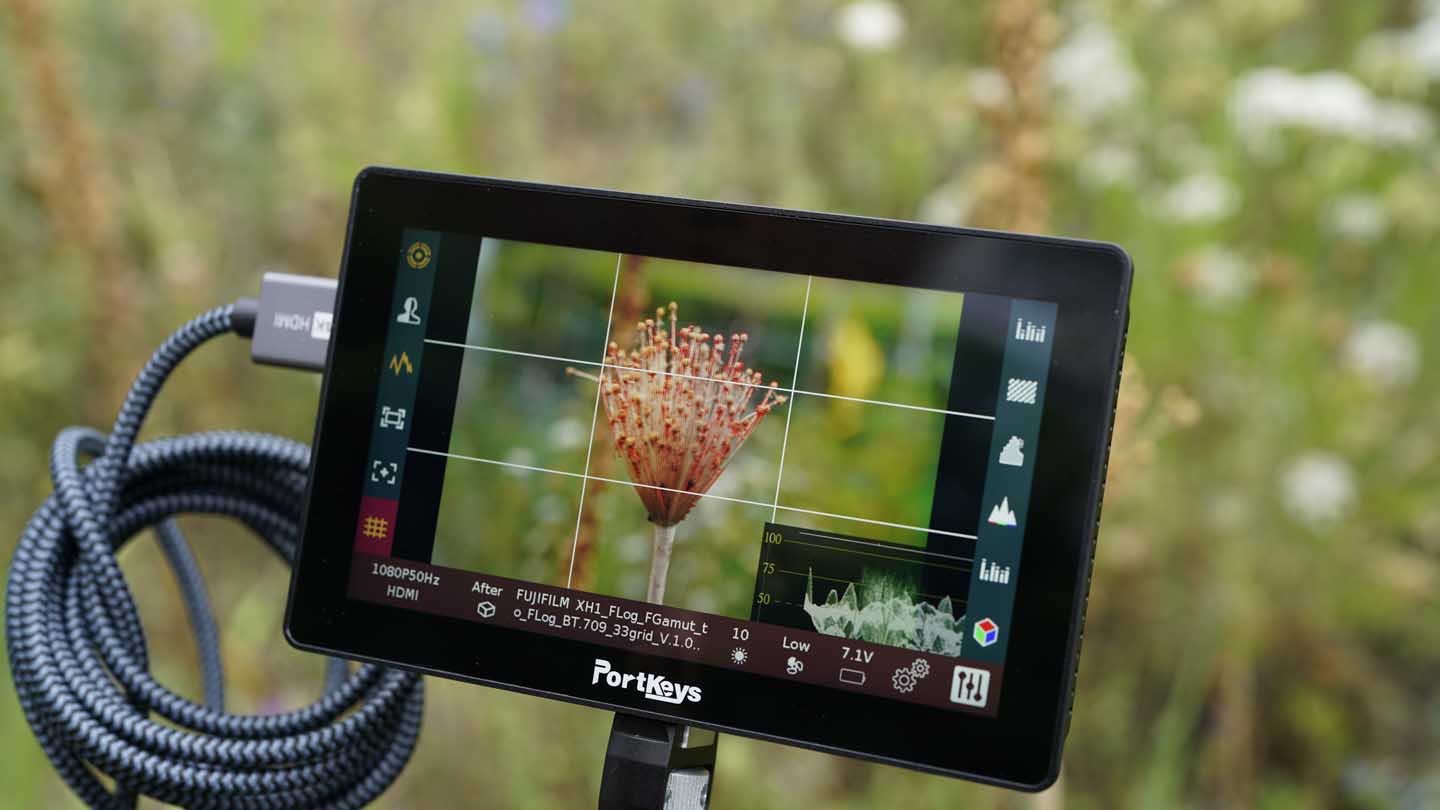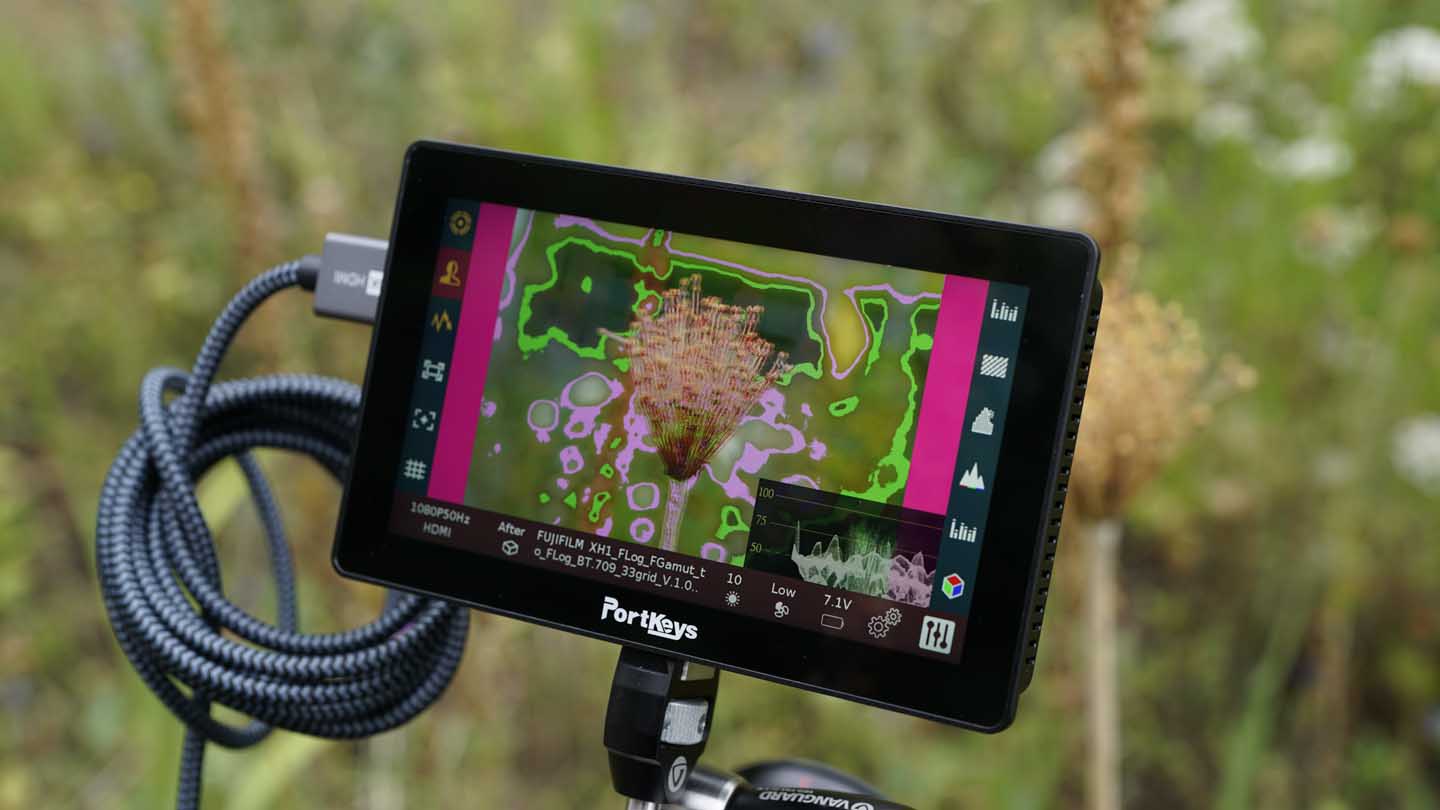The PortKeys LH5P II is a touchscreen monitor that can connect to your camera through HDMI, USB and WiFi. How it connects and what connects depends on the make and model of your camera, but, for most cameras, there are a few core features.
These include being a standard monitor that will display directly from your camera through HDMI. Once connected, you can see what you would usually see on the back of your camera’s screen.
You can then connect to your camera using a direct cable or WiFi for Sony models, in many cases, this connection will enable you to adjust exposure settings such as aperture, shutter speed and ISO and for some cameras the ability to adjust focus.
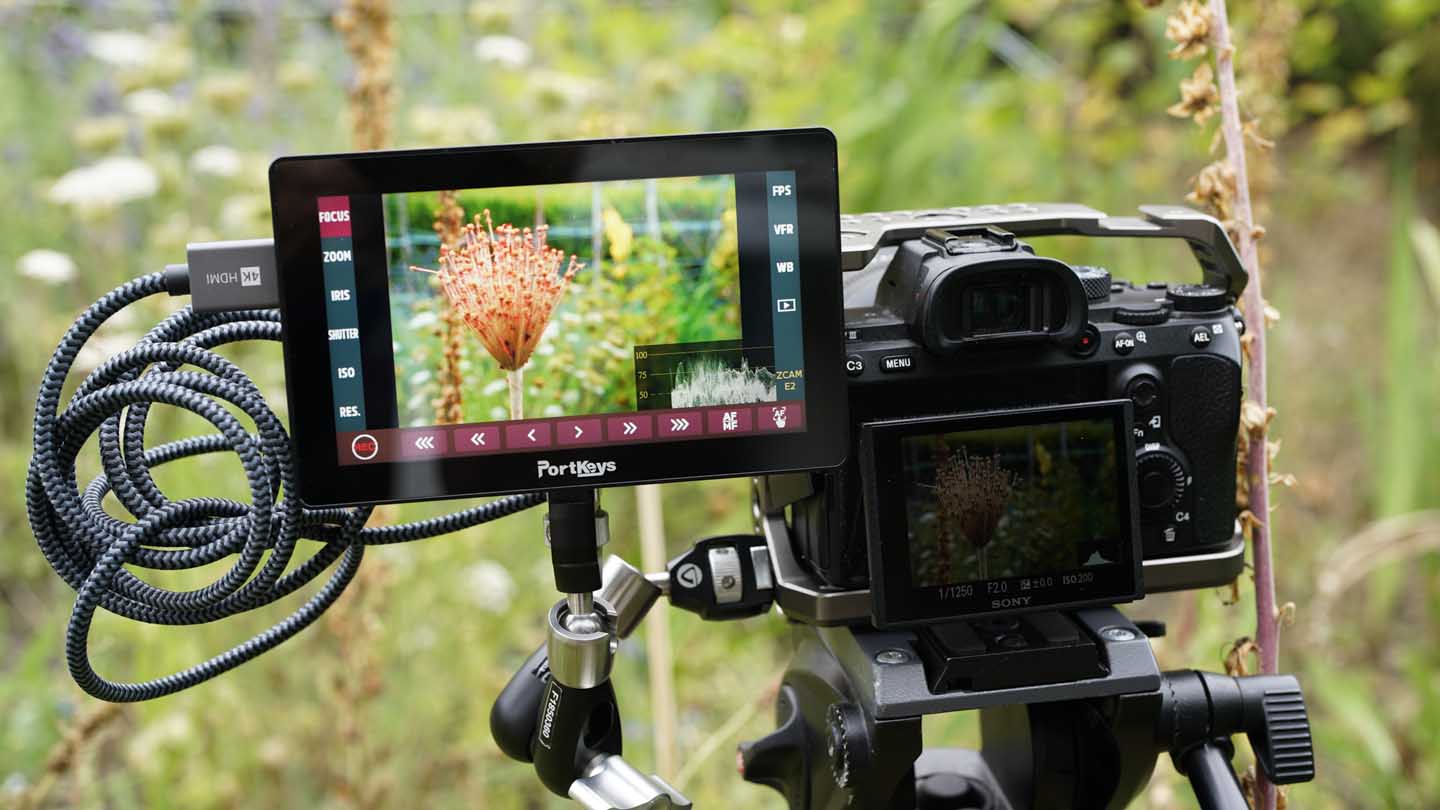
In this test, I’ve used the PortKeys LH5P II with the Sony A7 III and A7 IV, which enable a direct HDMI feed through a cable and connection through WiFi to the main camera controls. As you delve into the device, you realise there are many more functions and features.
For cameras such as the Sony A7 IV, you also have the ability to touch focus which is extremely useful, on the A7 III the touch focus can only be used at the focus point and not to move it’s position. This touch focus option isn’t available in most cameras so best to check compatibility on PortKey’s website.
However, if you’re after focus control there is another option. With additional kits from companies such as Tilta focus and zoom motors can be attached and linked in further enhancing the usability and options.

